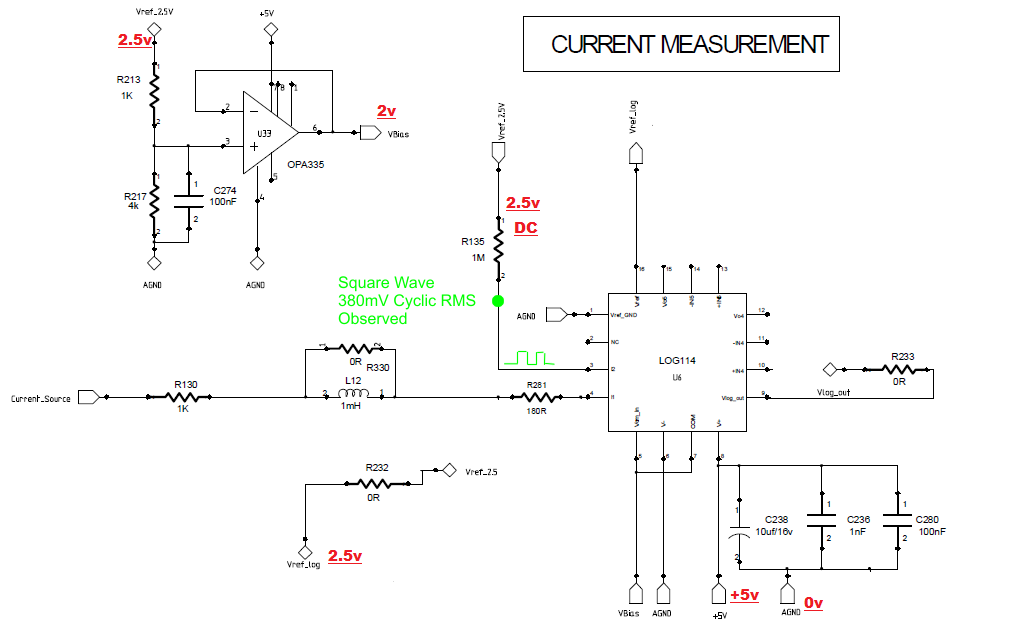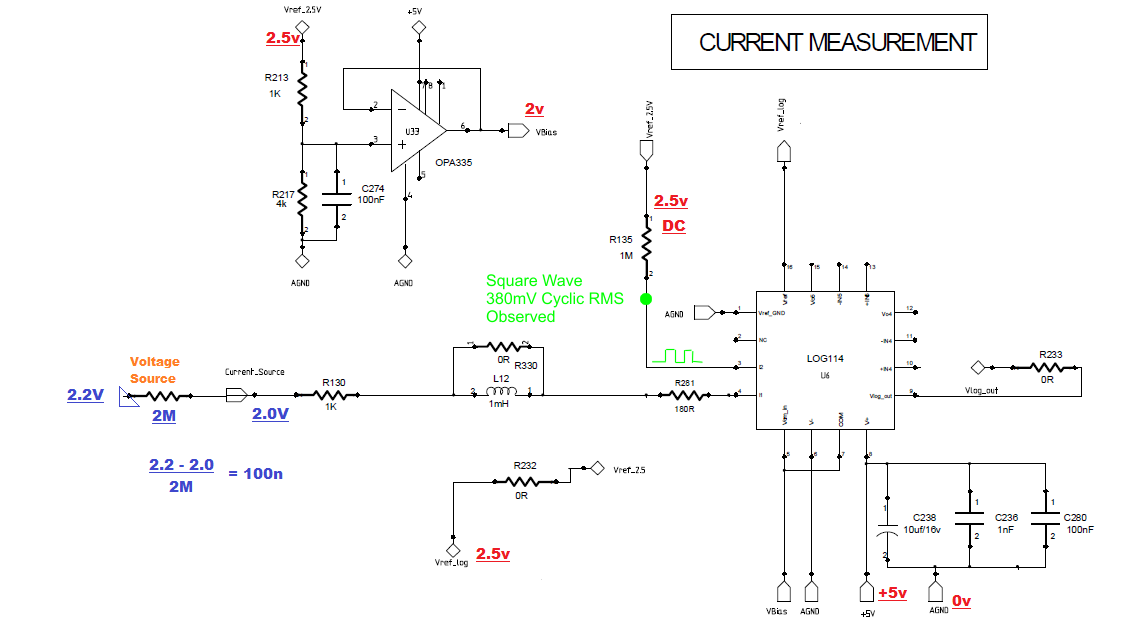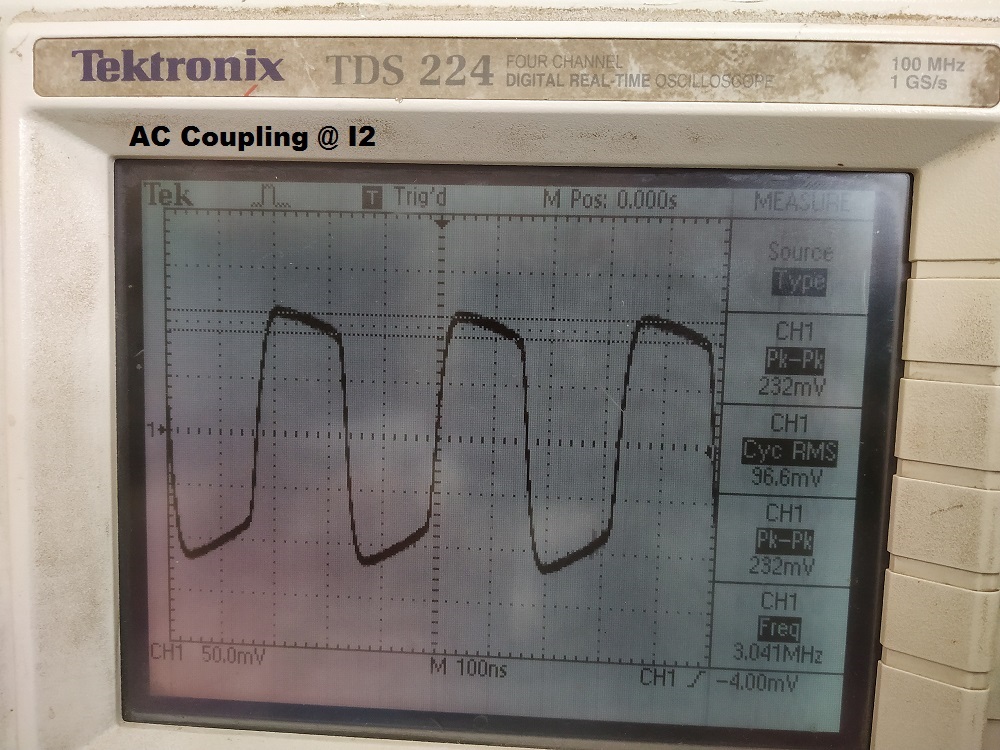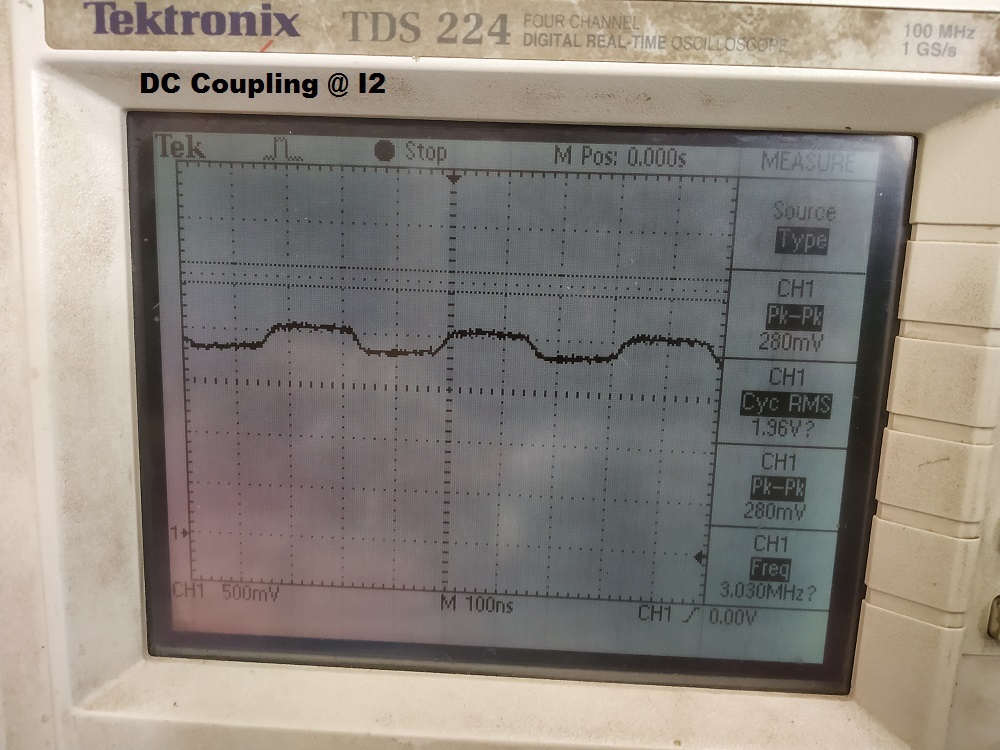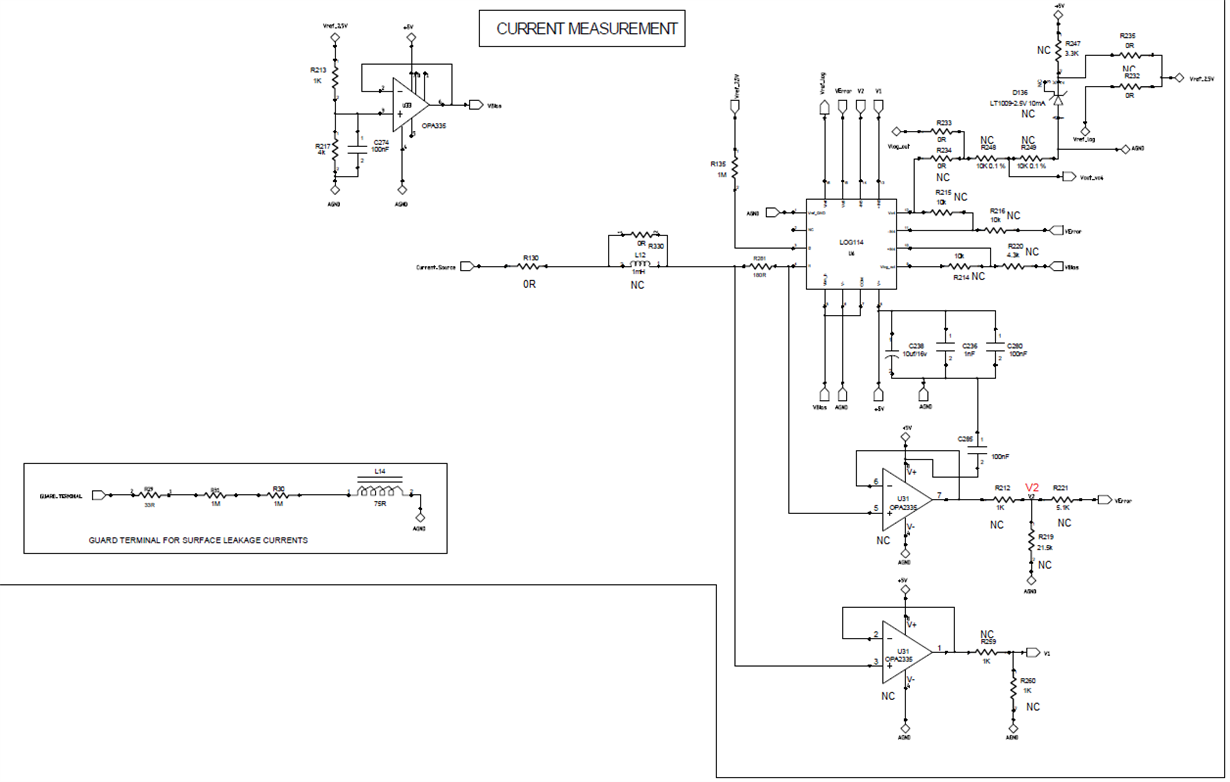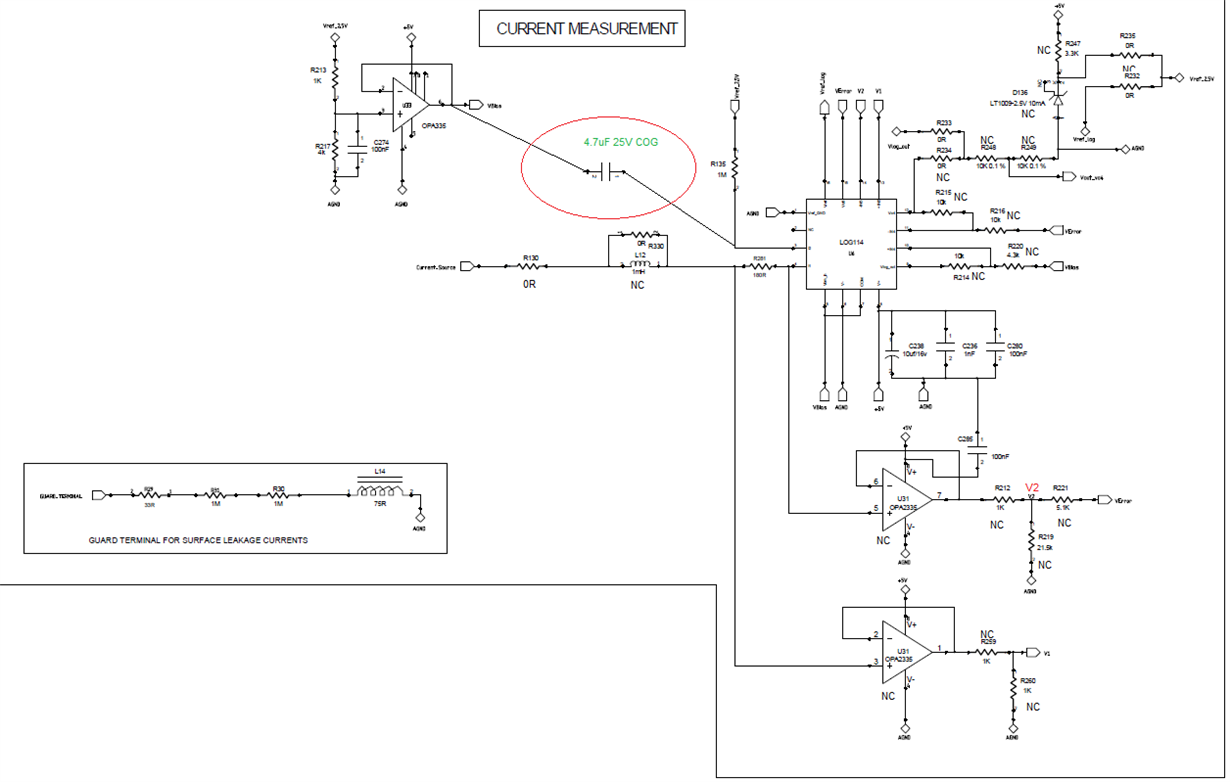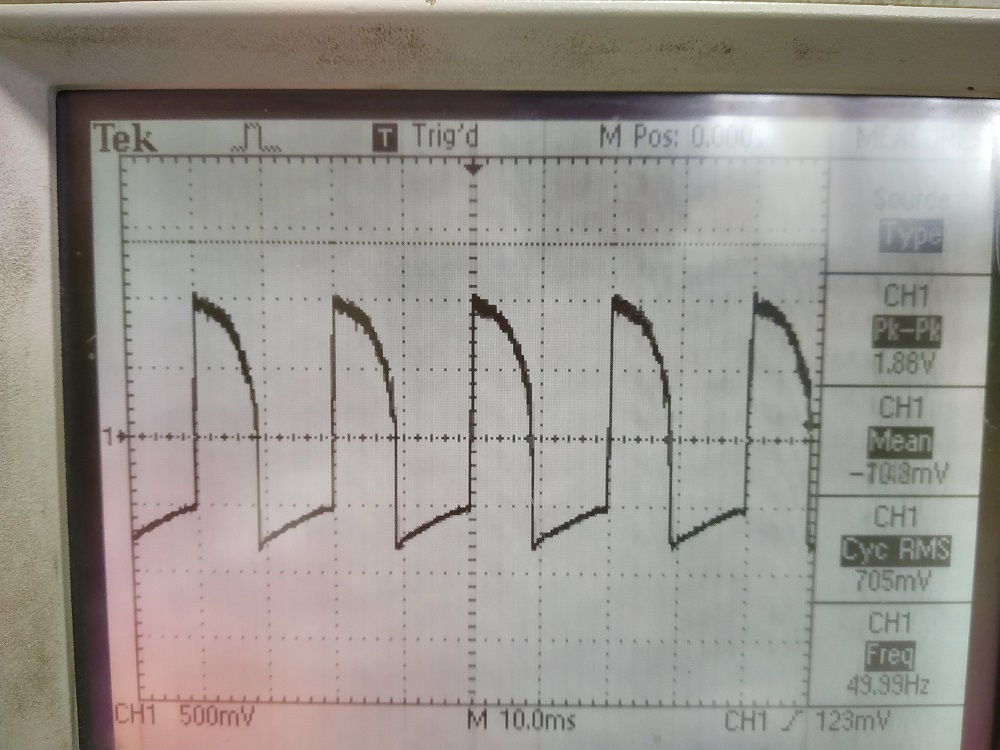Other Parts Discussed in Thread: OPA335, , OPA320
We have Observed Square Wave at reference I2 in the below circuit
Due to this we are unable to measure current less than 500nA, Is Square Wave should be on I2 or it should be DC level (VCM level)?
Kindly help to resolve the issue


